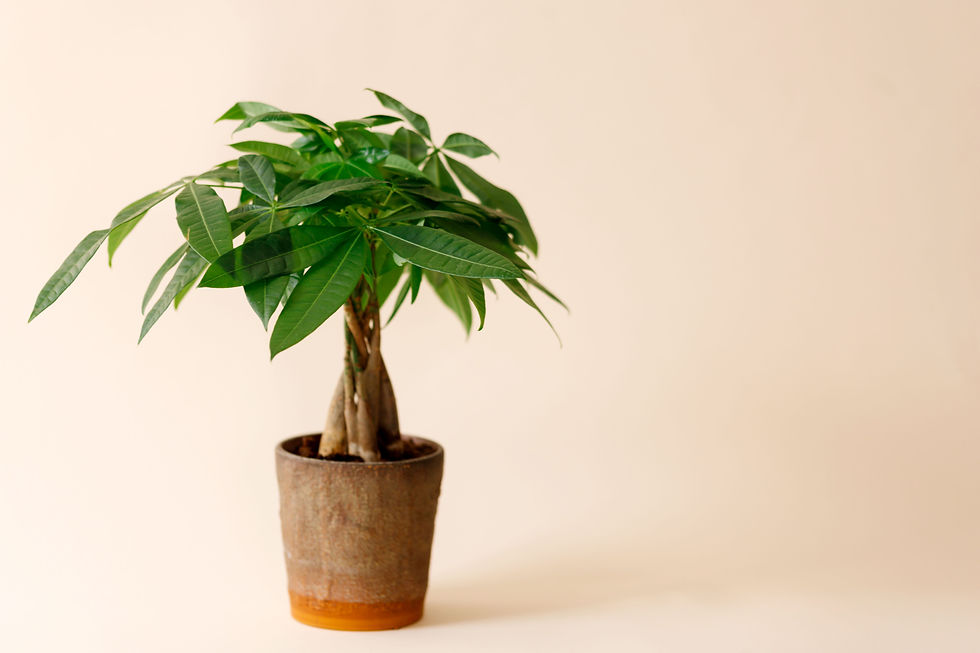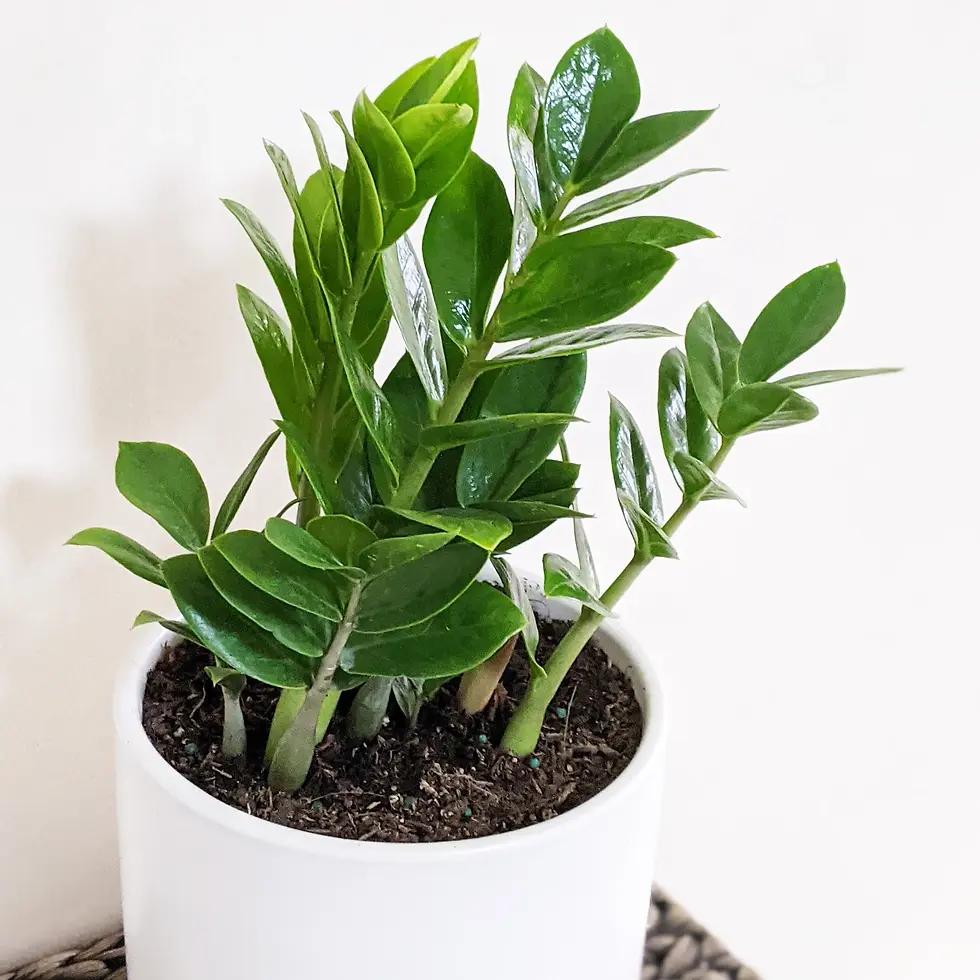Money Plant Feng Shui
- Vivian Tay

- Jul 25
- 8 min read
Money Plant Feng Shui

What is Feng Shui?
Picture stepping into your home each morning and feeling an immediate sense of calm, clarity, and possibility—this is the power of Feng Shui for young families. In busy Singaporean households—juggling work, school runs, tuition, and rest—cluttered spaces, blocked corners, and stagnant layout can dilute life energy, or qi (气), reducing family harmony and well‑being.
Feng Shui isn’t just about artefact placement—it’s a strategic method for arranging your environment based on ancient Chinese principles of positive energy flow, elemental balance, and spatial harmony. No two homes and occupants are the same. Hence, while general Feng Shui tips may work for some, they are more of a coincidence and a general statement that usually caters to the simple majority.
With Feng Shui dating back to ancient civilizations in China, the original concept of Feng Shui is primarily used for planning. On a larger scale, Feng Shui is used to plan for village setups, townships, and the design of imperial palaces. On a smaller scale, Feng Shui is adopted by officials and businessmen in the design of their homes. In ancient China, the main hall, bedrooms, study room, and even the kitchen were all standalone structures. They are connected by pathways, and the interior architecture of large households often contains pavilions, water sources (such as a well, river, or even an internal lake), and, of course, gardens featuring plants.
It is not difficult to see that modern-day Feng Shui has strategically adopted the essence of this ancient art. Living plants are a fundamental part of Feng Shui—they breathe life into spaces, soften harsh lines, and invite steady growth. Being the best representative for 木, one of the 5 elements, it is intuitive that plants are commonly used in Feng Shui. Among these, the money plant stands out for blending symbolic meaning, environmental cleansing, and Feng Shui potency.
Money Plant? What Exactly Are We Talking About?
“Money plant” is a familiar term in Singapore, but it may refer to several different plant species, each with its origins, aesthetics, care needs, and symbolic associations. The terms had been so loosely used, especially during the Chinese New Year Festive season, due to their auspicious association.
🌱 Chinese Money Plant aka Wealth Coin Plant (Pilea peperomioides)

Native to Yunnan, China, the Chinese Money Plant is adored for its glossy, round, coin-like leaves that float atop thin stems. Its distinctive look truly earned it the name “money plant.” Discovered in the 1940s by Norwegian missionary Agnar Espegren, it was introduced to Europe and later adopted as a gift of friendship, propagated easily from cuttings and shared among friends.
In Singapore homes today, it’s widely used as a decorative feature in living rooms or study areas—its neat, upright form and green coin-shaped leaves are an interesting feature that breaks up the monotonic hard décor. It thrives in bright, indirect light exposure and requires watering only when the topsoil dries; proper care rewards you with finely textured leaves that seem to multiply over time.
Auspicious Meaning: Its coin-shaped foliage symbolizes incoming wealth. Cash notes came way after coins; hence, you will notice that Feng Shui coins such as 五帝铜钱 exist, but there is no mention of notes.
Feng Shui Role: Offers shared prosperity energy; ideal for plant placement in communal areas like study zones, entryways, or living spaces.
🌴 Feng Shui Money Tree (Parchira aquatica)

Originally from Central and South America, the Money Tree, also known as the Feng Shui Tree (金钱树,风水树), gained popularity in East Asia, where braided trunks and five‑leaf sets became synonymous with abundance and blessing. A folk tale tells of a poor farmer who discovered the seeds and sold the seedlings—becoming wealthy in the process—and so the plant became known as a symbol of financial fortune.
Indoors, it can grow over 1.5 m tall, with lush, palmate leaves. It prefers bright, humid environments and well-draining soil, and responds well when slightly underwatered rather than overwatered. In Singapore, it's often used in business setups or home entryways—its presence making a strong, grounded feng shui statement.
Auspicious Name: The braided truck and five-leaf set of this plant are the key reasons why it is regarded as auspicious. The 5 elements, represented by the shapes of the leaves, are intertwined and tightly rooted by the braided stem of the plant. Hence, this is a common plant to amplify positive energy through a balance of the 5 elements. Its braided trunk also suggests a strong relationship and bond.
Feng Shui Role: The Feng Shui Money tree is a common plant used to amplify positive energy through a balance of the 5 elements. Used in areas where there is elemental imbalance, it seeks to restore a balance of energy, promoting stability. Its braided stem also encourages a strong relationship and bond.
🌿 Feng Shui Money Plant "ZZ Plant" (Zamioculcas zamiifolia)

With its dark glossy leaves and statuesque form, the Feng Shui Money Plant commands presence and calm. Native to Eastern Africa, it became widely appreciated for its tolerance, thriving in low light, enduring neglect, and requiring minimal watering. Its leaves resemble polished coins or ingots in shape and sheen, supporting its feng shui identity as a wealth‑invoking plant.
Care is almost foolproof—just water when the soil is dry, and it will reward resilience with slow, dependable growth. Many Singapore families and offices place it in corners with limited sunlight, trusting its steady presence to bring quiet prosperity without fuss. It is also a popular choice of indoor plants for the living room.
Auspicious Name: Often called the “Gold Coin Plant” due to the coin-like gloss of its leaves.
Feng Shui Role: Embodies stability, endurance, and reliable wealth energy—perfect for areas needing consistent qi without distraction.
🍃 True Feng Shui Money Plant (Epipremnum aureum, also known as Devil’s Ivy . Variation may be named as Golden Pothos, Marble Queen Pothos, Neon Pothos)
This plant is without a doubt the star of Feng Shui lore. Native to Southeast Asia, Epipremnum aureum is a vigorous tropical vine that produces heart‑shaped leaves in green or variegated forms with gold or cream streaks. The name “Devil’s Ivy” comes from its legendary hardiness—it survives light scarcity (low light requirements), water fluctuations, and poor soil, looking fresh and lush even after neglect.
There are many different sub-species, but they are usually all marketed under the name of money plant collectively.
In Singapore’s humid, low-light flats, it flourishes naturally—vines spill over pots, climb shelves, or cascade from hanging baskets. Its fast growth symbolizes continuous financial gain, while its air-purifying capabilities to absorb toxins like formaldehyde and benzene—validated by scientific studies—make it ideal for cleansing indoor air and stagnant qi. It is also a good indoor plant for residences and home offices, requiring minimal plant care.
Auspicious Name: Known in Feng Shui as the “Money Plant” for its uninterrupted vitality and symbolism. A highly resilient plant, its nature of “生” is the key reason why it is associated with wealth growth.
Feng Shui Role: One of the two plants that can be used to purify energy, negate poison arrow, and also be placed in the restroom, the Epipremnum Aureum is a choice plant for a Feng Shui setup. For activation of the wealth sector, its resilience and high-growth rate symbolize wealth growth and prosperity.
You may sometimes see this plant being used in terrariums, wealth bowls, or wealth vases.
Money Plant for Feng Shui? What Works—and What Doesn’t?
While all four plants discussed above are broadly considered auspicious, we strongly prefer the Epipremnum aureum.
The Epipremnum aureum checks every box. It’s physically and energetically adaptable to local conditions—whether your home has little sunlight or your lifestyle is packed with activities, it won’t falter. The plant is also ideal for those without green fingers, considering its hardiness. Moreover, its Feng Shui Meaning (蕴意) is exceptional, offering occupants the benefits of purifying a negative space while at the same time being able to promote financial success (净化磁场,生财开运).
Money plant care requirements are relatively straightforward. They do not require demanding soil mix, and indirect lighting will suffice. The watering schedule is somewhat forgiving, as it can survive well with an inconsistent watering schedule. This makes it an excellent plant for interior spaces, offering natural elements to one's interior architecture.
Why Epipremnum aureum? Origin, Folklore & Trusted Selection
The plant is resilient—even given little care, it keeps growing. In Feng Shui lore, this resilience symbolizes wealth that persists and regenerates. It’s believed that placing it near entrances or wealth corners “attracts money even when conditions are poor.” Its ability to spread across vast areas in harsh conditions symbolizes the ability to “grow” (生), and with it spreading across land mass, it has the positive association of achieving “a floor of wealth” (遍地黄金).
Scientifically, Epipremnum Aureum, the golden Pothos, is recognized for removing indoor pollutants like formaldehyde, benzene, and xylene. Its expansive, heart-shaped leaves and trailing growth also smooth energy flow, eliminating sharp corners (poison arrows) and uplifting mood.
When a Feng Shui Master Recommends a Money Plant
You’ll often see recommendations for Epipremnum aureum in these scenarios:
Wealth stagnation or lack of wealth / Career growth – the continuous vine pathways act like energy “money channels.”
Confronting sharp structures – placed near corners, stairwells, or exposed beams, its vine “curtain” softens ‘poison arrows.’
Wealth corner activation – placing it in the southeast corner activates abundance energy.
Area where there is negative energy – the plant can dispel and negate negative energy (化解晦气)
How We Can Help You with Your Residential Feng Shui
At Moon Feng Shui, we offer personalized Feng Shui Services for all residence. Our services include:
On-site visit – On-site Feng Shui audit to understand the current situation of your residence.
Effective methodology – At Moon Feng Shui, we adopt a method known as 三吉重叠. A detailed and comprehensive method, it considers both the house and occupants’ Bazi. By utilizing the concept of stacking, we are able to identify areas of exception auspicious strength for wealth, career, health and relationships.
Personalised Report Preparation – With key information obtained, we analyse and document our key findings. The report will include detailed analysis, readings, and recommendations.
Communication – We communicate frequently with all clients to ensure each experience and suggestion is highly personalized. In addition, we also specifically cater a session where we take questions from our clients
Key dates – Where renovation and moving-in are involved, we offer complimentary auspicious date selection.
On-site Activation – We will be on-site to ensure everything is in place. A space clearing and activation procedure will be performed using Palo Santo.
Get in touch with us now to find out more about how Feng Shui can raise the quality of your life!
Disclaimer: The information provided in this article is for educational and informational purposes only and should not be considered as professional Feng Shui advice. Feng Shui practices and interpretations can vary, and their effectiveness may differ based on individual circumstances and specific locations. For personalized guidance, it is strongly recommended to consult with a qualified Feng Shui Master or professional consultant who can assess your unique situation. The author and company are not responsible for any outcomes resulting from the application of Feng Shui principles described in this article. Always use caution and discretion when implementing any Feng Shui methods.





Comments